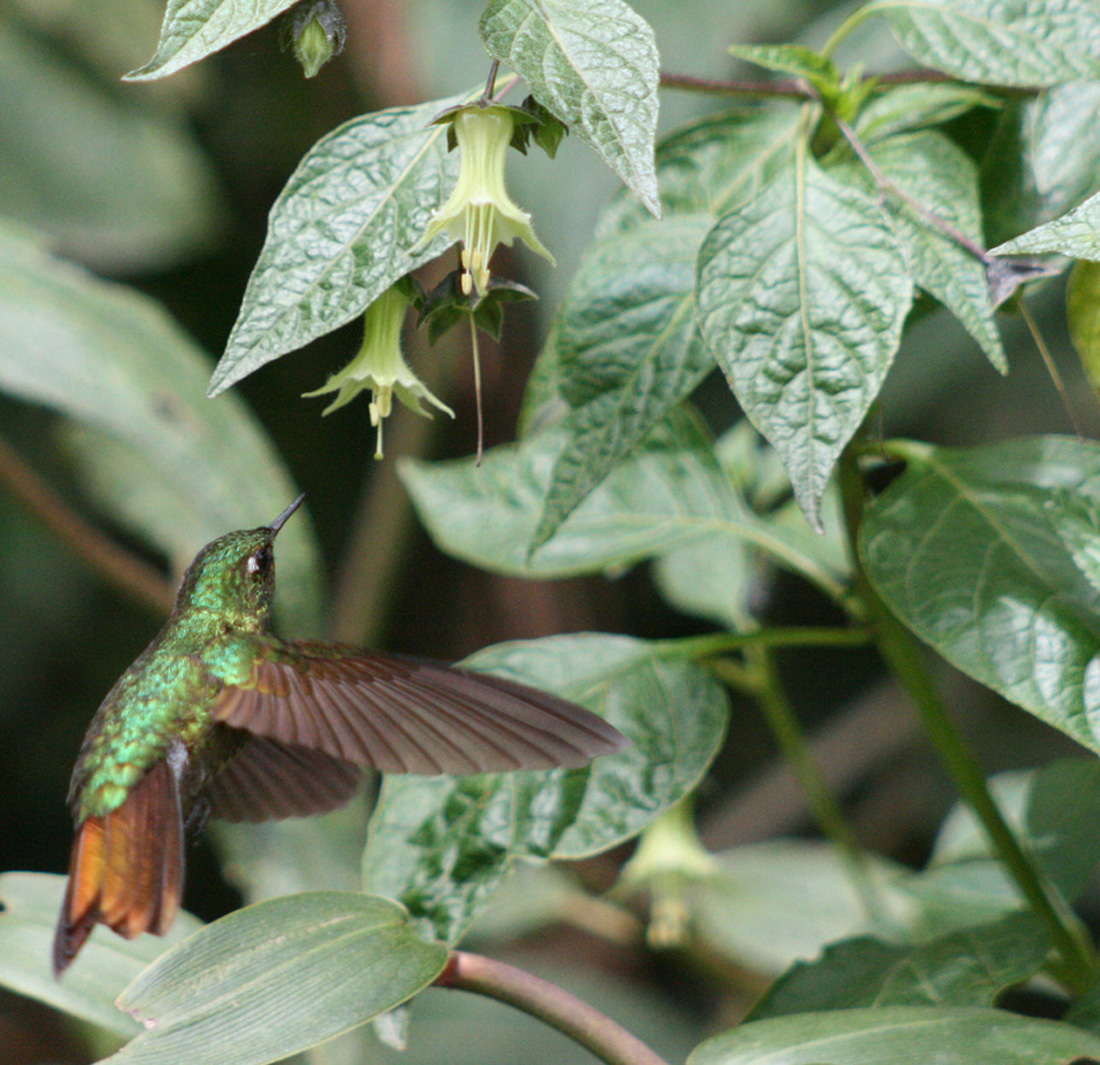|
Pollination of Jaltomata (Solanaceae) |
revised
Dec 2017
|
|
Link
to Jaltomata homepage |
The
information on this page may be cited as a communication with professor
Thomas Mione, |
|
|
|
|
Figure 1. Flowers of Jaltomata
viridiflora visited
by rufous-tailed hummingbird in Ecuador (photo
by Jack Lamb 2007). |
|
|
|
|
Figure
2. Bee visiting flower of Jaltomata diversa in Peru,
department Arequipa (Leiva,
Mione, Yacher 4669, photo
by Segundo Leiva G.) |
Figure
3. Bee visiting flower of Jaltomata diversa in Peru,
department Arequipa (Leiva,
Mione, Yacher 4669, photo
by Segundo Leiva G.) |
|
According to Bitter (1921,
page 342), Weberbauer suggested (in correspondence or a paper dated 5
December 1920) that the red nectar attracts small flies for pollination. The
person helping with translation from German was not a professional
translator, so I am only reasonably sure of this translation. Williams (1985, page 92)
noted that visitation of Jaltomata
by honey bees has been observed on numerous occasions in Tlaxcala, Mexico.
Tilton Davis generously gave his unpublished notes to me, in which he wrote
“Outside the greenhouses where David Williams was growing his plants
[presumably in Mexico where Williams worked] Apis mellifera was frequenting the plants." |
|
Mione & S. Leiva G.
observed what appeared to be honey bees visiting Jaltomata athahuallapae in department Cajamaraca,
Peru, 26 March 2013, Mione et al. 830.
|
|
Eickwort (1967) described
bees visiting Jaltomata in
Costa Rica. He wrote (with nomenclature updated by Mione): "Flowers of Jaltomata hang downwards and the
tubular anthers also completely enclose the pollen. Each locule possesses a
thin and easily torn white longitudinal strip of epidermis in the same
position as the slit of the Solanum
anthers. Bees were observed to manipulate intact strips with their mandibles.
This plus the jagged edges of torn strips suggest that mandibular action
usually opens the anther. Scratches on the epidermis of the anther leave
brown scars indicating the bees' activities. As the anther ages, the strip is
torn open for the length of the anther. Since all anthers examined were either
torn open by the bees or were immature, it could not be ascertained if the
anthers would open naturally in the absence of Chilicola. Pollen-gathering behavior is otherwise similar
to that of Solanum. Note
that wherever Eickwort wrote "Saracha"
I replaced it with "Jaltomata"
(Saracha does not grow in
Costa Rica; Jaltomata were
known as Saracha at that
time). And from the habitat he worked in (coffee plantations) and the photos
he included we can be reasonably sure that he worked with Jaltomata repandidentata
not J. procumbens. |
|
|
|
|
|
Adaxial face of corolla of Jaltomata
procumbens. Hairs 0.2 -- 0.325 mm long, are
gland-tipped (measured with a compound microsope). Photo with dissecting
microscope by Gabriella Moreno & T. Mione. Mione
844 |
|
Link
to Jaltomata homepage |
The
information on this page may be cited as a communication with professor
Thomas Mione, |
